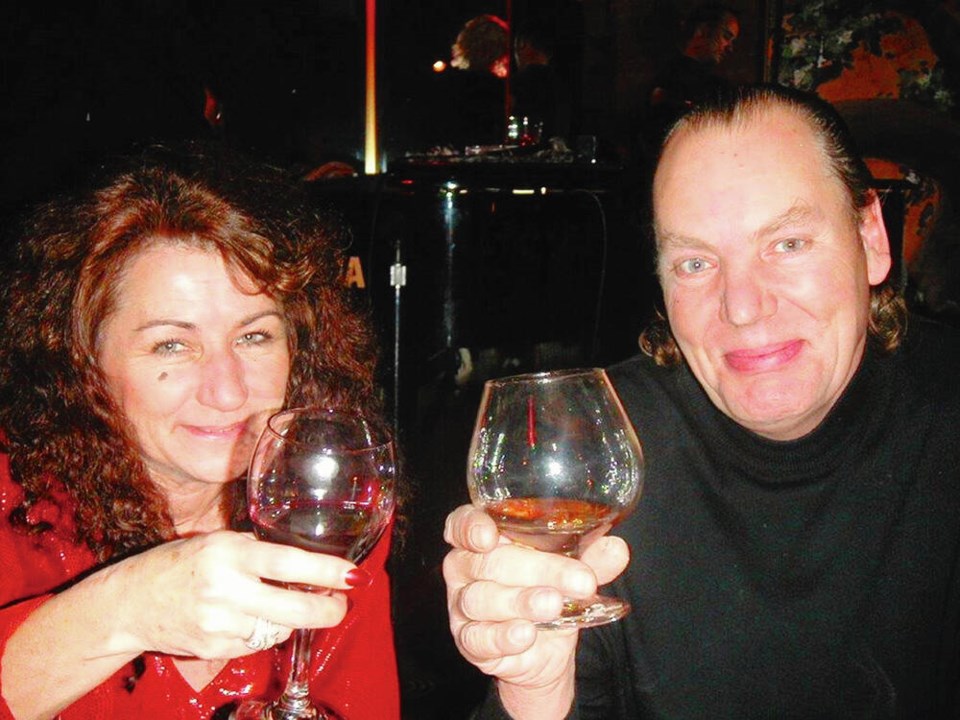Months after being diagnosed with an irregular heartbeat, Eileen Bell awoke in late August to a squeezing feeling in her chest, an aching jaw and a computerized watch indicating her heart rate was soaring.
“I was concerned I was having a heart attack and called 911,” said Bell from her home in Saanich. “As you can imagine this was a very stressful experience and the stress was exacerbated by the fact that the emergency services were not available when needed.”
It was about 1 a.m. on Aug. 28, and the 74-year-old’s heart was racing at 140 beats a minute. She said she was put on hold by a 911 operator for over five minutes before the call taker asked if she wanted police, fire or ambulance. Her call was transferred to B.C. Emergency Health Services, where Bell was on hold another five minutes.
“It was very frightening,” Bell said by phone from her home in Saanich.
“At that point, my husband decided to drive ourselves to the nearest hospital, which was the Saanich Peninsula.”
Bell is one of many Vancouver Islanders contacting the Times Colonist this week to share stories of calling 911, asking for an ambulance and being placed on hold.
In the last week of August, a Parksville man died waiting for an ambulance to arrive, a Qualicum Beach woman ran to the ambulance station while on hold with 911 while her post-operative husband lay writhing in pain at home, and another Qualicum Beach man who was on hold 20 minutes drove his bleeding wife to an ambulance station.
When Bell and husband David Cox arrived home from Saanich Peninsula Hospital, there was a message from the ambulance service that had been left 45 minutes after the couple headed to the hospital, asking if help was still required.
Bell shared her story with a neighbour, who told her that on Aug. 27 she had vomited and fainted at a restaurant and the wait staff called 911, only to be put on hold for 25 minutes.
“Either of these experiences could have been a life or death situation and the lack of a timely response from the services we rely on for just such an emergency was very much a wake-up call for us that our health care system is in a crisis,” said Bell in a letter to Health Minister Adrian Dix, Premier John Horgan and Saanich-South MLA Lana Popham. It’s not the kind of service one expects in Canada, she said.
“I have friends who are on their own, widowed or divorced or whatever, and I thought: ‘Oh my God — what would I do if I were on my own?’ ” said Bell. She and her husband warned friends they should have a backup plan to 911 for themselves or their loved ones.
Cox said the 911 call taker — who likely knew there would be an ambulance wait — never asked how urgent the situation was, which he said demonstrates a “lack of responsibility and accountability in the system.” He thinks an independent review is needed to get at the root of the problem.
On Aug. 28, Nigel Habgood had fallen asleep watching TV when he heard his wife, Carole Kowal, screaming. Kowal, a former restaurateur in Calgary, was suffering complications from terminal liver disease. Habgood found her lying in a pool of blood on the bathroom floor of their north Qualicum Beach home.
Habgood, 72, called 911 and told the call taker he needed an ambulance. “She said: ‘OK, I’ll put you through,’ and I immediately get a voice recording that says we’ll be with you in a minute.”
Habgood was on hold for 10 minutes. “I thought; ‘This is ridiculous.’ ” The 911 operator commented that the ambulance service must be very busy. Another 10 minutes passed. When the 911 call taker came on the line again, Habgood said: “Forget it, I’m taking her myself.”
Habgood wrapped up his wife, put her in his car and sped to Oceanside Health Centre in a record 22 minutes. “I used to rally cars in England.”
Habgood, who has worked in film production for 40 years, including on the X-Files in Vancouver, is new to the area and thought the health centre would be open day and night, but it was 10 p.m. and the centre is closed after 9:30 p.m. The sign on the door instructed after-hours arrivals to call 911 for emergencies.
“I thought, ‘Oh my God — this is crazy,’ ” said Habgood. Fortunately, there was a nearby ambulance station. Habgood pulled up and raced in and the attendants immediately put Kowal on a stretcher, “hooked her up” and got her to Nanaimo Regional General Hospital.
The ambulance paramedics and hospital staff were brilliant, said Habgood, “but the dispatch system is a complete and utter failure.”
Habgood asks what would have happened to his wife had she been alone. “She could have bled out by the time they got there.”
“I think it’s pathetic and horrifying and unnecessary in our society, in our country, to not be able to get a 911 ambulance operator 24-7,” said Habgood.
The Health Ministry has said it’s converting 24 rural ambulance stations to round-the-clock operations, and funding 85 new full-time paramedics and 30 full-time dispatchers.
On Friday, new call takers — seven in Victoria, 11 in Vancouver and seven in Kamloops — were being trained, said Troy Clifford, provincial union president for the Ambulance Paramedics of B.C. and Emergency Dispatchers of B.C., with another 30 expected to start training next month.



